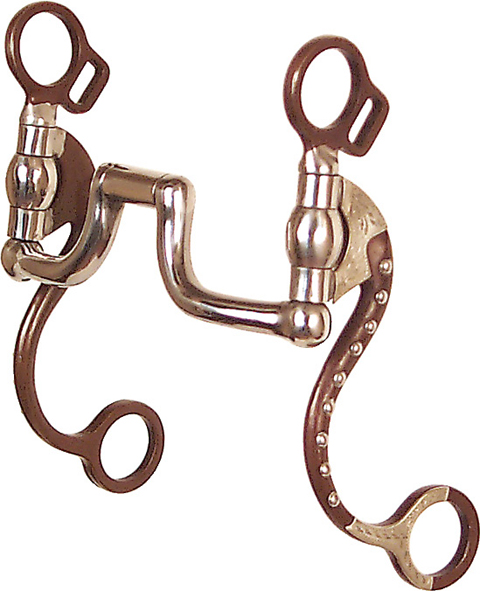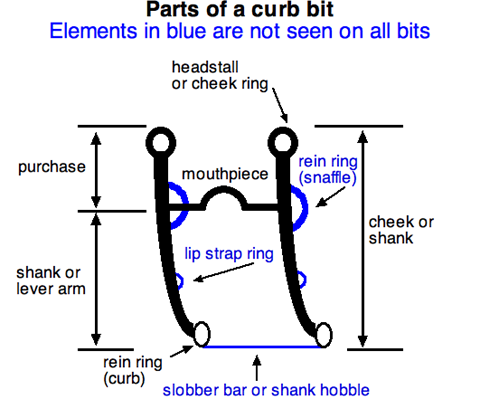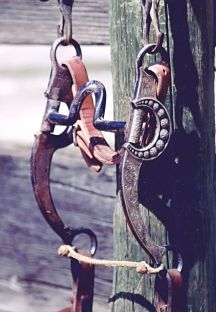
I’ve written before about snaffle bits. Those bits exert exactly the same pressure on the horse’s mouth as the cowboy is putting on the reins.
Another style of bit uses leverage to put more pressure on the horse’s mouth and as you probably have figured out they also require a rider who understands that and only puts on the appropriate amount of pressure. Leveraged bits are only for experienced “gentle hands” riders and are not used on young horses.
Leveraged bits are sometimes called shanked or curbed bits. The idea is that the horse basically knows what to do from previous training so the “stronger” bit only needs to make a small movement to the horse’s mouth or lips to communicate the idea. It might seem like it’s harsher but in good hands the horse actually likes it better because only a small signal is needed.

There are many styles of leveraged bits but in general the reins are not directly connected to the mouthpiece. They are instead attached to shanks that hang down from the horse’s mouth. They have a solid piece of metal that goes in the horse’s mouth between two pieces of metal (shanks) that are outside his cheeks. The piece in the horse’s mouth is attached near one end of the shank and the reins at the other achieving leverage. The severity of the curb is based on the ratio of length of the rein shank to chain shank according to the following formula:
The pivot point to where the reins are attached at the end of the long shank
————– (divided by) ————–
The pivot point to where the curb chain is attached at the end of the short shank
A curb with a 5″ rein shank and a 1″ curb shank will generate a force ratio of 5:1. Thus a 20 lb. pull on the rein will result in 100 lbs. of pressure being developed by the curb’s “vise grip” onto the horse’s jaw. Overall shank or cheek length, from the top of the cheek ring to the bottom of the rein ring, usually cannot exceed 8½ inches for most horse show disciplines.
 Leverage devices such as curb bits cannot be effectively “direct reined”. Pulling on one rein to guide the horse will cause the lever to actuate and squeeze the jaw. Thus the horse must be taught to “neck rein” before wearing such a device and the curb should not be used to teach lateral control to a beginning horse.
Leverage devices such as curb bits cannot be effectively “direct reined”. Pulling on one rein to guide the horse will cause the lever to actuate and squeeze the jaw. Thus the horse must be taught to “neck rein” before wearing such a device and the curb should not be used to teach lateral control to a beginning horse.
The piece in the horse’s mouth typically has a “hump” in the middle that acts on the bars, tongue and roof of the mouth. There are kinds of styles with different devices as the hump including roller bars that the horse’s tongue can move.
